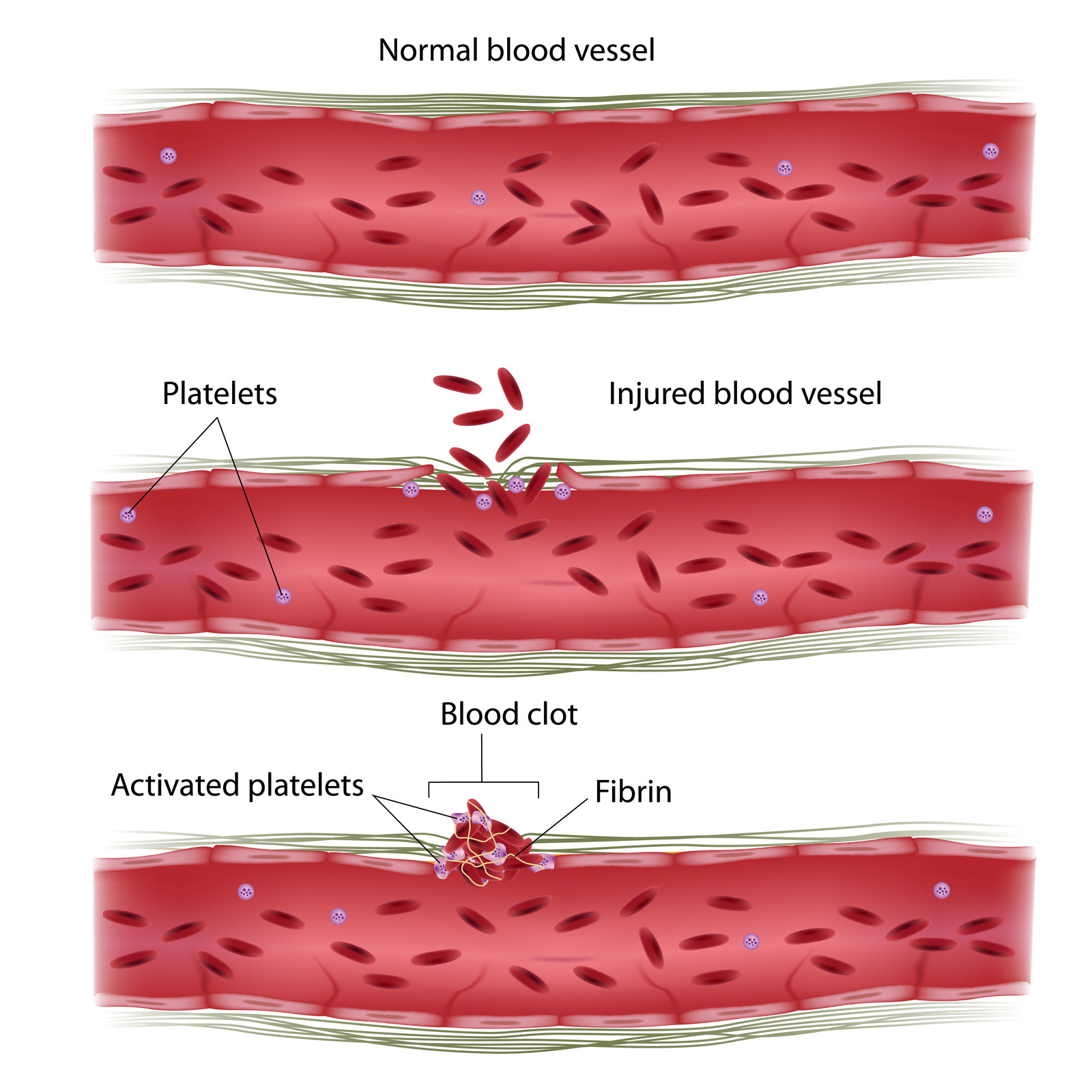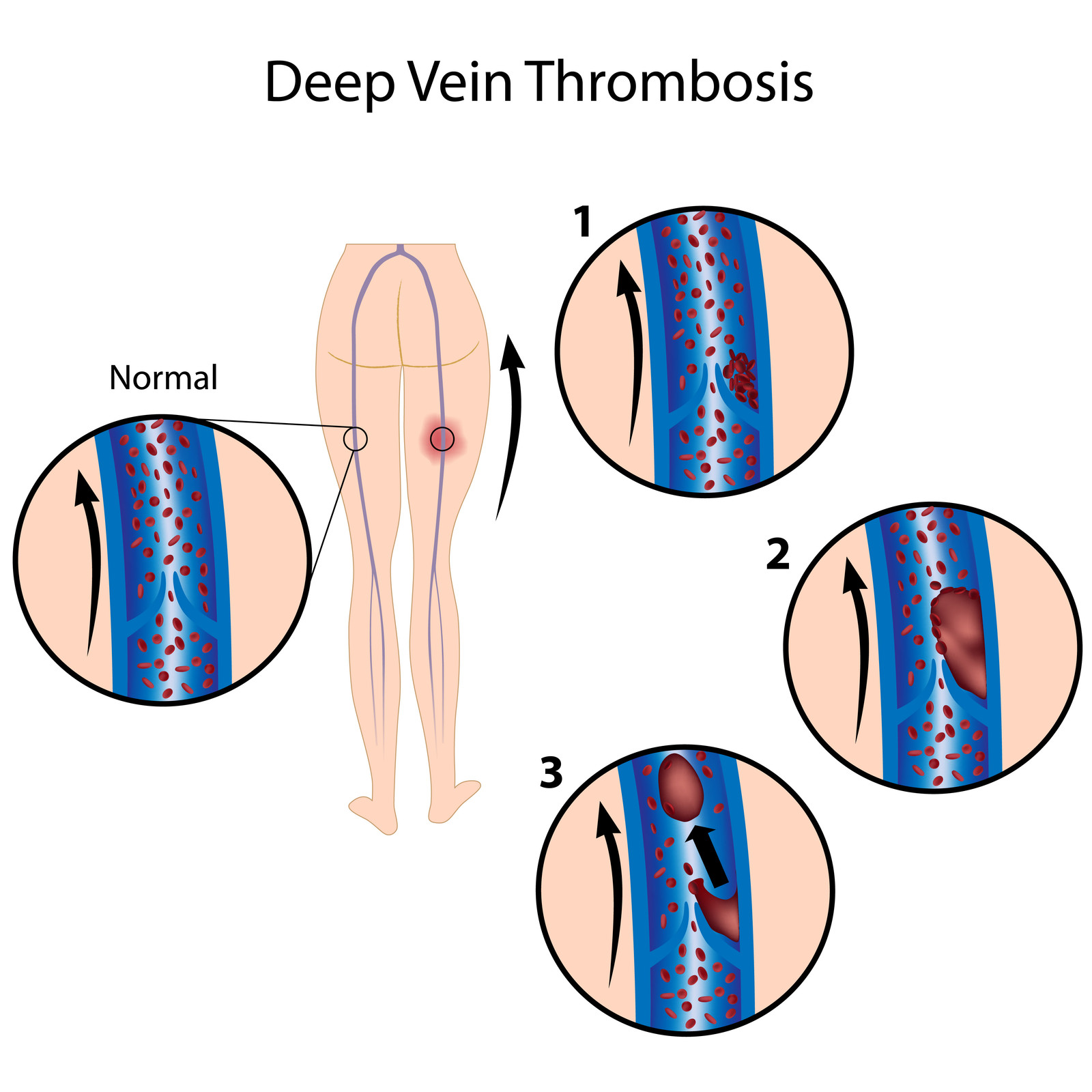Our heart pumps blood around our bodies, keeping us alive. The continuous and smooth flow of blood around our body is essential. Formation of a blood clot in the wrong place—known medically as thrombosis—can cause interruption of normal blood flow and result in illness, which in some cases can be life threatening [1].
A blood clot within the veins or arteries, which are the vessels that form our ‘cardiovascular system’, causes some common and well-known cardiovascular illnesses. Blood clots forming in the deep veins of the legs can cause deep vein thrombosis (called DVT for short) [1]. A ‘pulmonary embolism’ (PE for short) results from a blood clot blocking the arterial blood supply to the lungs [2]. Blood clots forming and blocking a coronary artery, can block blood supply to a part of the heart muscle and cause a heart attack [3] and clots in arteries supplying blood to the brain can cause a stroke [4].
In this section, we will explore the biology of blood clotting and examine how our bodies form blood clots and why thrombosis occurs.
If we cut our skin, a clot forms that stops blood loss from the injury. This is part of the process known as ‘haemostasis’ and is the body’s normal response to injury. The first step in the process of haemostasis is the narrowing of an injured blood vessel, which constricts and limits blood flow in the vessel. Clotting then begins, in which blood changes from a liquid to a gel. Blood particles called platelets clump and stick to the vessel wall and they interact with and activate other proteins to form fibrous strands called fibrin [5]. These strands form a net that catch other blood cells and help to produce a clot.

The formation of a clot is balanced by another process that stops clotting and breaks down and removes a clot once the vessel has repaired. The process of haemostasis exists in balance to ensure excessive bleeding or excessive clotting does not occur. An imbalance in the blood clotting system can lead to excessive bleeding (haemorrhage) or excessive clotting (thrombosis) [6].
Thrombosis is the formation of a blood clot or ‘thrombus’ inside a blood vessel that significantly reduces or stops the flow of blood to or from the heart [1].
There are three broad categories of factors that disturb the normal clotting process and contribute to thrombosis [6]. These are:
Doctors often refer to these categories as ‘Virchow’s triad’ after the doctor who first described them more than 100 years ago [7]. These principles are still used today by physicians diagnosing and treating patients with thrombosis.

Venous thrombosis is a blood clot that develops in a vein [2,7]. Veins are the blood vessels that carry blood from tissues back to the heart. Blood in veins is not under high pressure as it is in arteries, and, therefore, veins have valves and require muscular movement to move blood through them and to push blood upward from the feet against gravity [8].
Because of the way blood flows through a vein, the area at the base of the valve has reduced blood flow. If the body’s normal blood clotting system is out of balance, platelets can begin to attach to the blood vessel wall, triggering fibrin formation, and a clot begins to form [7].

A form of venous thrombosis is a DVT, which is when a clot forms (most commonly), in the leg [1,2]. If an embolus breaks off and moves up the leg, through the heart, and lodges in a lung artery, a person suffers a PE [1]. These related blood clot problems— DVT and PE—are known as ‘venous thromboembolism’ (VTE for short) [7].
VTE matters because it is a significant cause of death in hospitalised patients in Australia [9] and NZ(10). Learn more about VTE on the next pages.
VTEMatters offers general information only. Please see a healthcare professional for medical advice.
DVT = Deep vein thrombosis
PE =Pulmonary embolism
VTE = Venous Thromboembolism